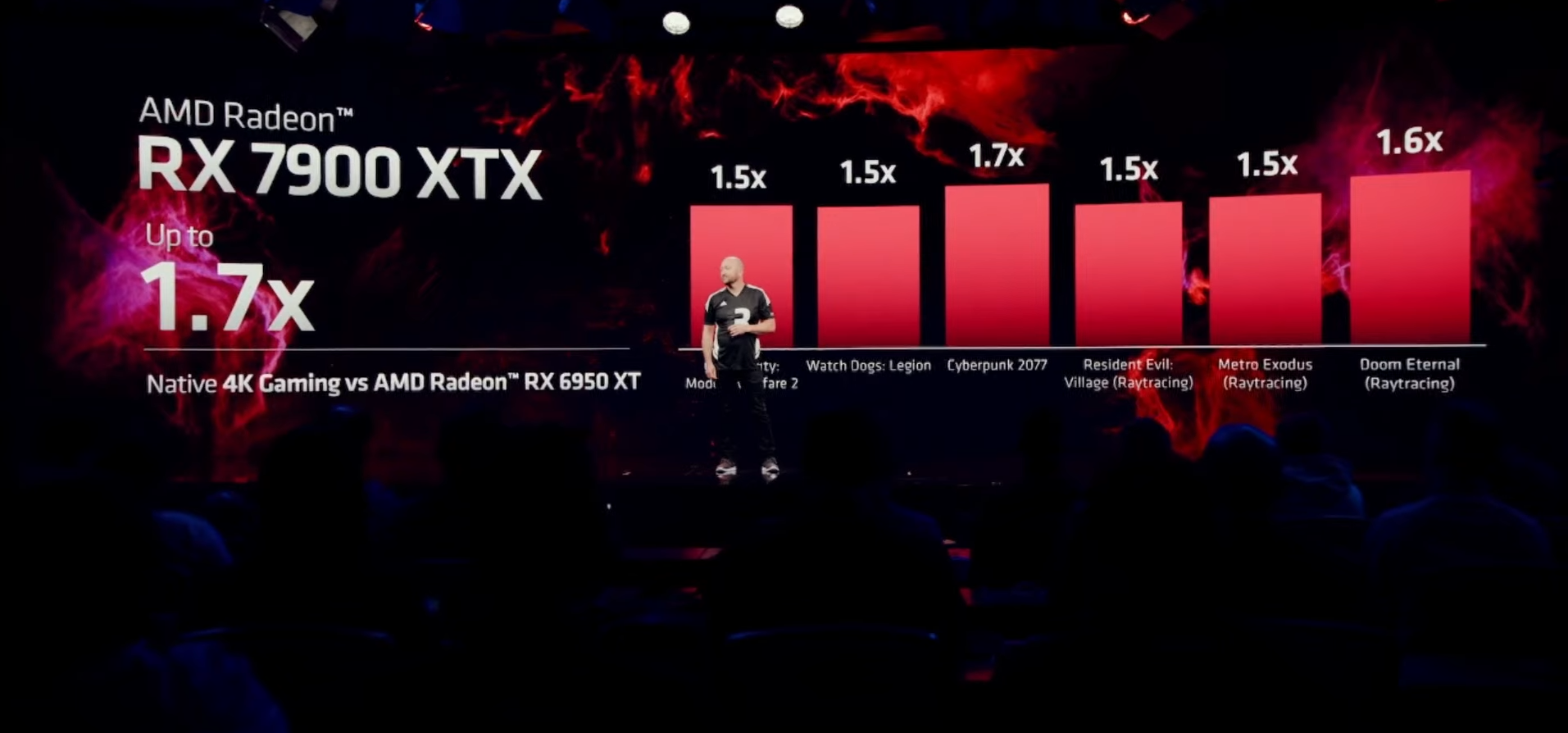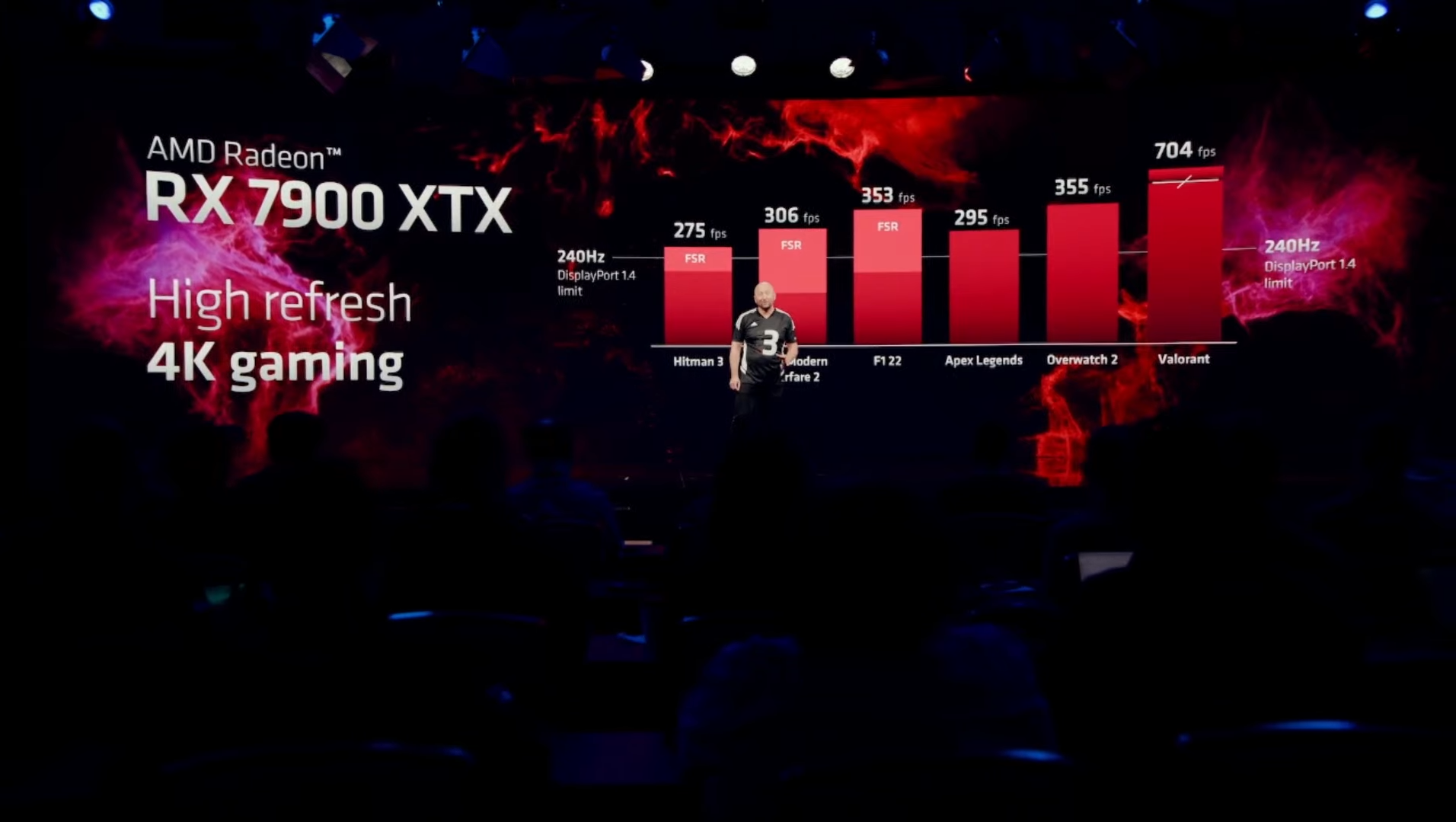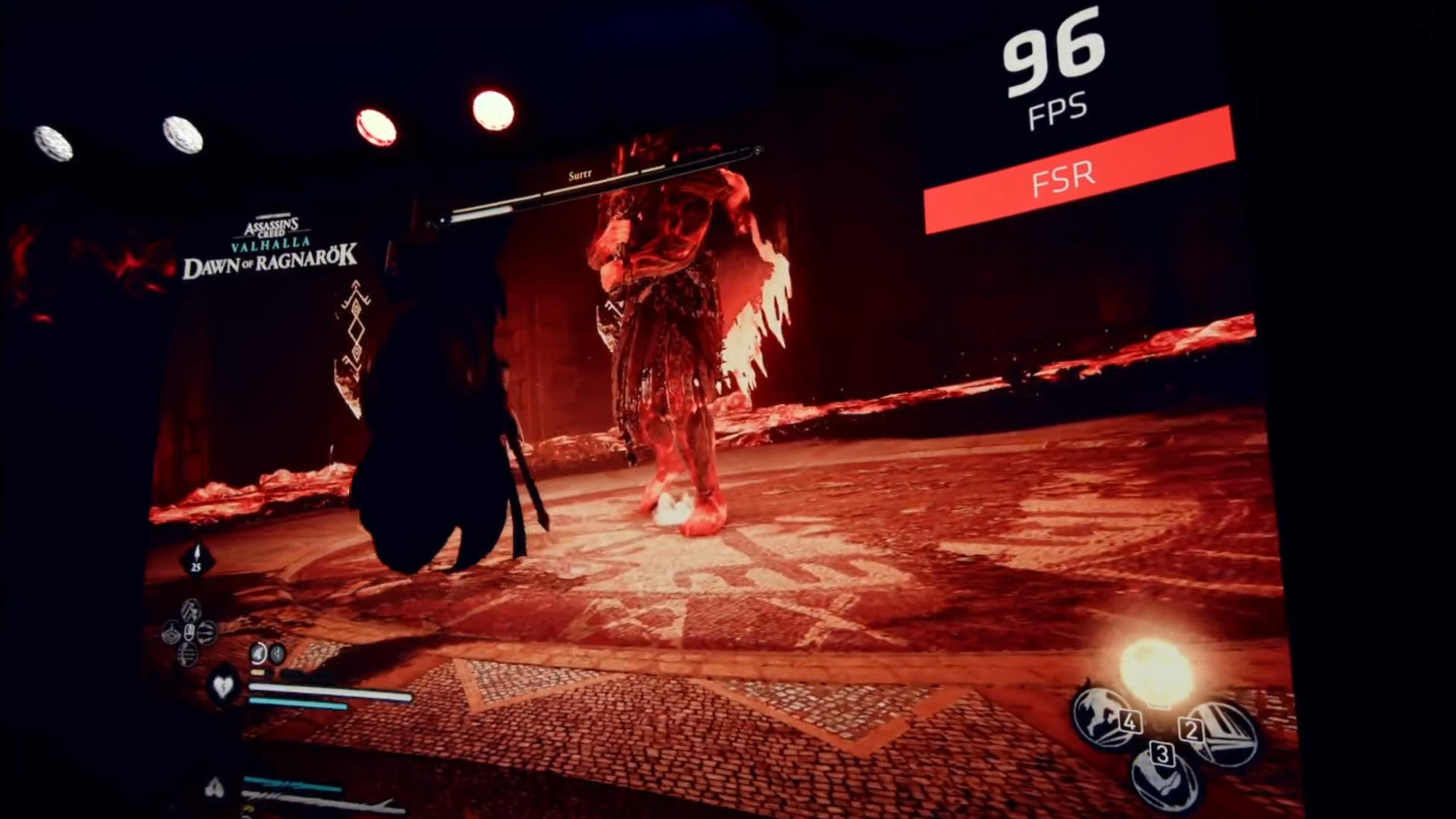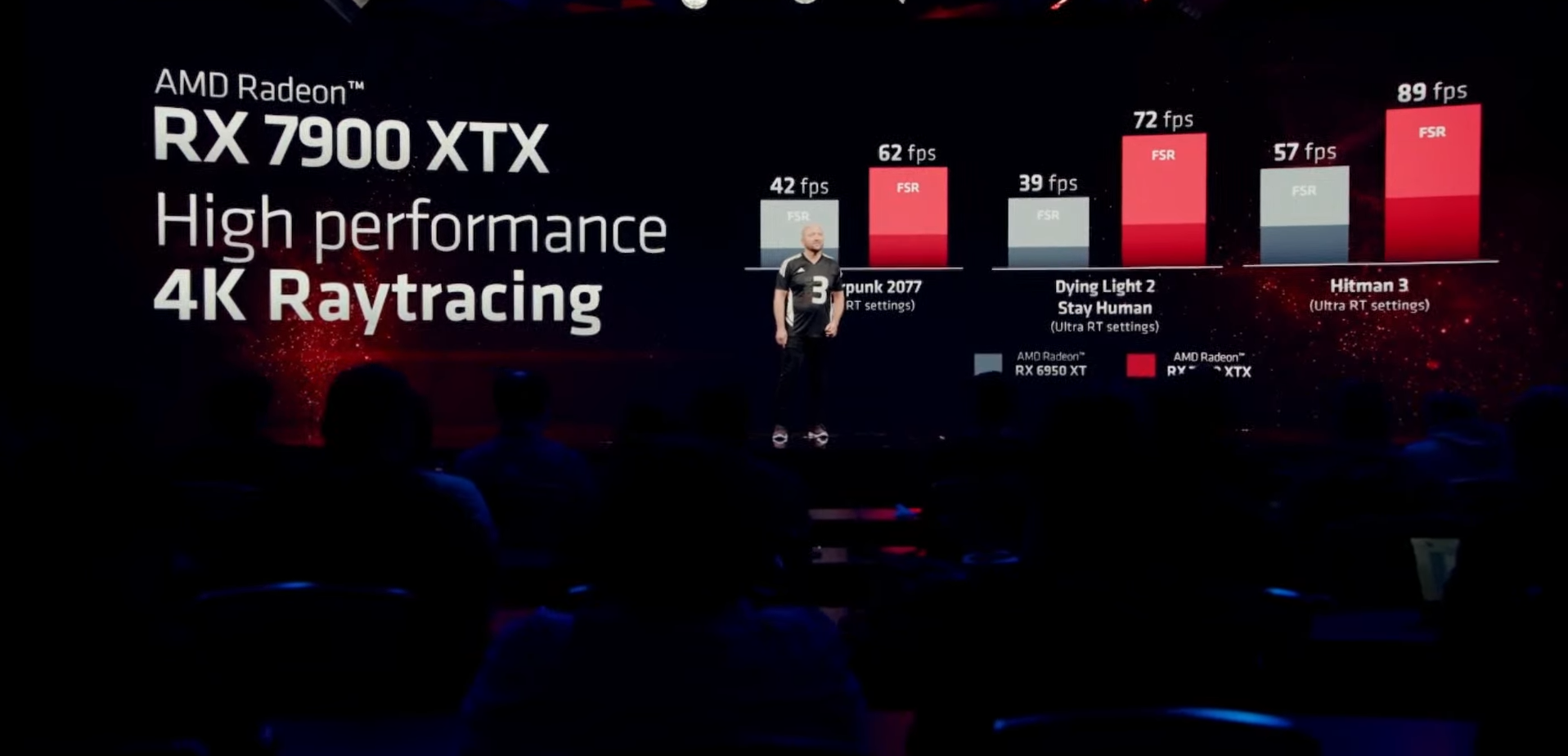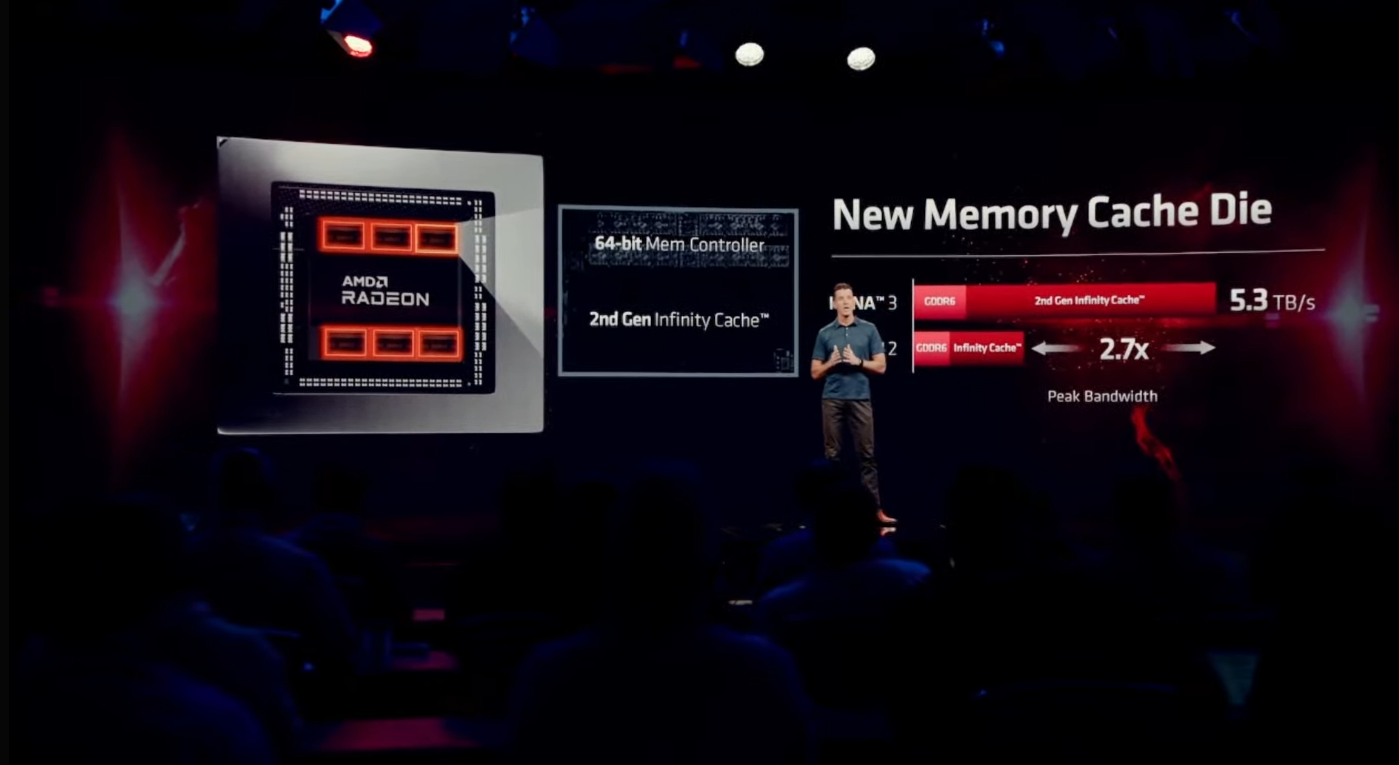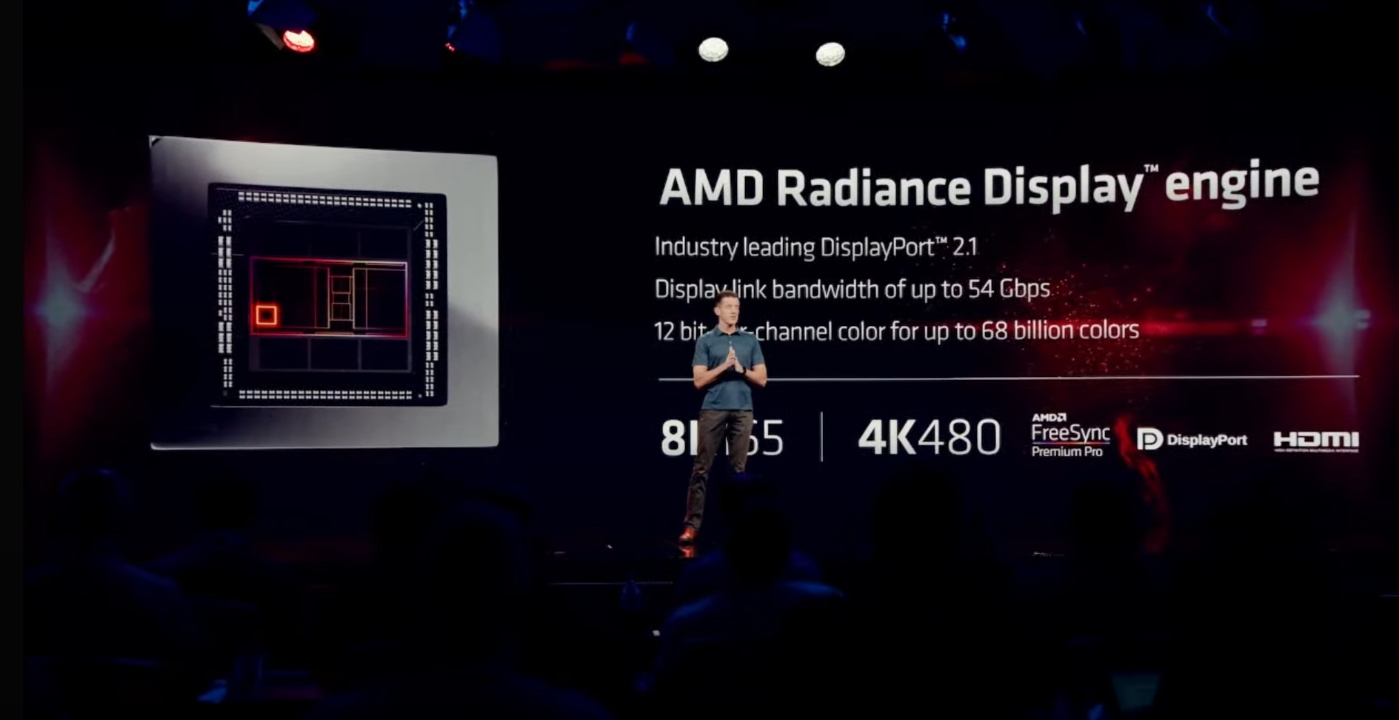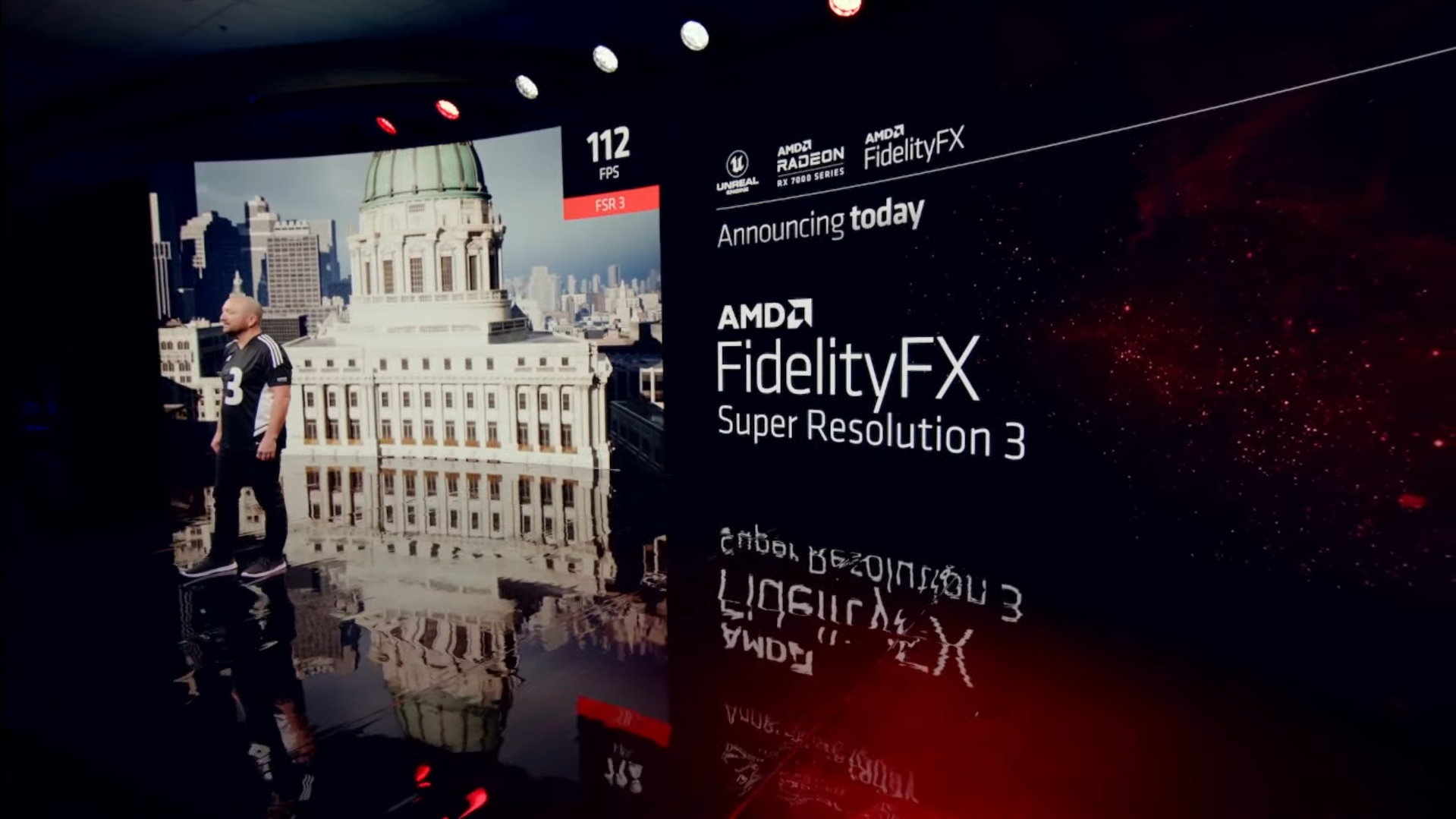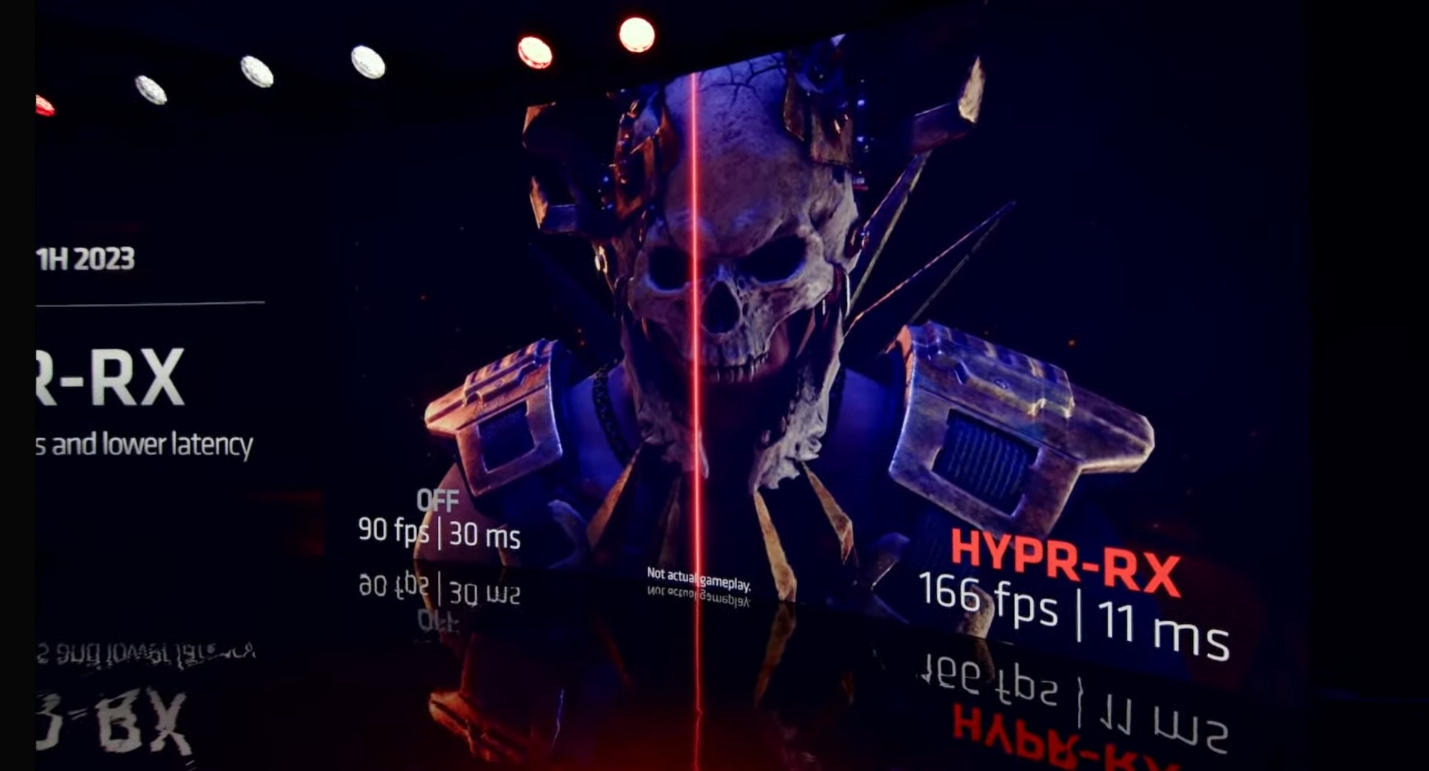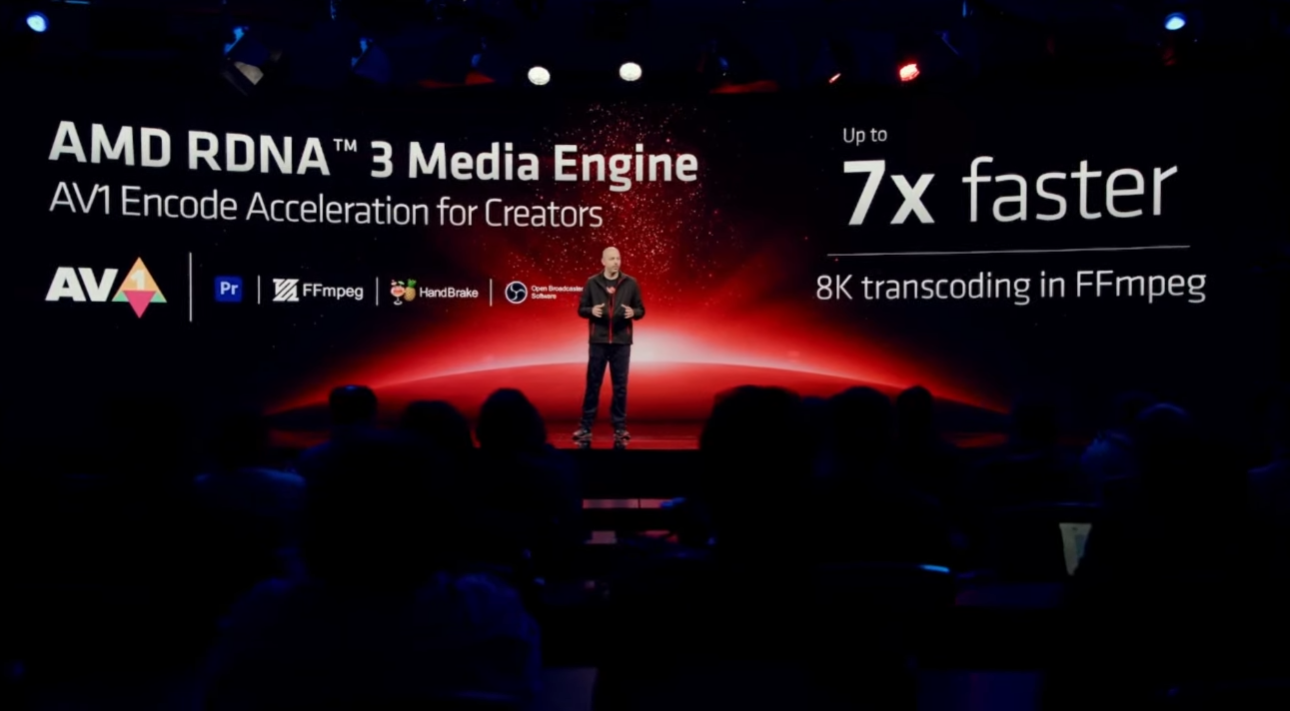The RDNA3 microarchitecture offers a major leap in performance along with increased efficiency across the board. RDNA3 features the next generation of Infinity Cache, a modified Graphics Pipeline along with a re-architectured Compute Unit. All such improvements generation on generation are tipped to offer a massive leap not just in raw vectorized performance, but also in ray tracing workloads. The Navi3X family arrives in 3 different flavours, Navi31, Navi32 and Navi33. Navi31 is the flagship GPU in this lineup based on a MCM (Multi Chip Module) design along with Navi32. An MCM design essentially grants AMD the choice of using different process nodes for their MCDs and GCDs, cutting costs significantly. The Navi31, codenamed ‘Plum Bonito‘ features a 1xGCD + 6xMCD design along with a maximum of 48WGPs. The mid-ranged Navi32 is named as ‘Wheat Nas‘ and ships with a 1xGCD + 4xMCD configuration. Whereas the lowest end, Navi33 is based on a monolithic design.
The RDNA3 King
Starting off, we have the kingpin RX 7900 XTX. The initial impression from the name reminds many enthusiasts and old school gamers of the ATI Radeon X1900XTX. Of course, that was 16 years ago. AMD has reinstated this naming scheme for their top-of-the-line RX 7900 XTX. This GPU is based on the Navi31 chip and ships with 12288 FP32 Units or 48 WGPs (Work Group Processors, 1WGP = 256 Shading Units) . This metric alone is a breathtaking 2.4x higher than last generation. AMD is done being the under dog this time. The RDNA3 king has 96MB of AMD’s signature Infinity Cache. A 24GB memory configuration (20Gbps) grants it 960GB/s of effective bandwidth over a 384-bit bus. If we take Infinity Cache into consideration, the total chiplet interconnect comes out to be 5.3TB/s. This behemoth is packed with 58B transistors, more than 2x the RX 6900 XT. Proving AMD’s generation-on-generation performance claims, we see a massive 61TFLOPs of compute performance. The average frequency metric termed as ‘Game Clock‘ stands at 2.4GHz. Whereas the base frequencies and boost frequencies are 1.9GHz and 2.5GHz respectively. Team Red really did go all out with these specifications and even then the TDP is rated at just 355W, leagues away from the RTX 4090’s ridiculous 450W figure. The RX 7900 XTX will retail for $999, potentially carving up a nice share of the market for AMD if the launch goes right, which is slated for the 13th of December.
The RX 7900 XT
AMD’s RX 7900 XT is the second offering in the 79XX family, following the flagship RX 7900 XTX. This SKU is equipped with a slightly cut-down variant of the Navi31 GPU, but don’t let those smaller numbers fool you as this GPU packs some serious horsepower. For some specs comparison, the 7900 XT features 10752 FP32 Units or 42 WGPs (Work Group Processors). Memory wise, we see a massive 20GB of GDDR6 memory across a 320-bit bus equating to 800GB/s of memory bandwidth. If we add AMD’s signature Infinity Cache (80MB) to the equation, this effective memory bandwidth increases by a huge margin. Being built on TSMC’s 5nm process, the boost clocks can easily surpass the 2GHz territory where the game clocks stand at 2.0GHz. Similarly, the 7900 XT clocks at 1.5GHz which can be boosted to 2.4GHz. In-line with AMD’s 50% efficiency increment over RDNA2, the RX 7900 XT has a TDP of 300W. Priced at $899, we expect it to trade blows with NVIDIA’s RTX 4080, possibly beating it out price-to-performance wise. All yours, from the 13th of December.
Performance
The RX 7900 XTX offers up to 1.7x more performance in raw rasterization at 4K. Moving over to ray tracing, team red promises a 50-60% lead over last-generation, but no comparisons against Team Green on stage were shown. E-Sports games see the biggest jump in performance with Valorant hitting 700FPS+. Even demanding titles such as Call of Duty: Modern Warfare 2 run at more than 300FPS. Flexing its muscles, AMD states that the RX 7900 XTX can pump out a constant 96FPS in Assassins Creed: Valhalla at 8K with FSR On. That’s simply insanse to say the least, even with upscaling at hand. An up to 85% ray tracing improvement can be seen courtesy of the new unified Compute Unit. Although, we suspect these numbers are still slightly lower than NVIDIA’s Ada Lovelace.
2nd Generation Infinity Cache
AMD has incorporated the next generation of Infinity Cache in their RDNA3 GPUs. This generational leap grants them a whopping 2.7x increase in bandwidth as compared to RDNA2. Such a boost in bandwidth will prove to be extremely fruitful at higher resolutions where each last GB/s of bandwidth matters.
DisplayPort 2.1
Beating NVIDIA to the punch, AMD’s RDNA3 comes with support for DisplayPort 2.1. This display interface supports 8K resolution at up to 165Hz and 4K at a massive 480Hz.
FSR 3.0
Arriving in 2023, the new FSR 3.0 will use the ‘Fluid-Motion‘ technology and provide up to 2x more FPS than the traditional FSR 2.0. We expect it to use the same frame generation technology as NVIDIA’s DLSS 3.0. Though, we are still unclear if it is hardware or software enabled.
HYPR-RX
The AMD HYPR-RX is an all-encompassing tool for boosting frames and reducing latency. This is AMD’s one-button solution and a possible competitor to NVIDIA’s Reflex. The goal is to make it easy for the user to take advantage of all the tools built into the Adrenalin software suite without having to enable/disable them separately. Read more about it in our coverage here.
AV1 Decode/Encode
Following the AV1 hype-train, the RDNA3 Media Engine supports AV1 encode akin to NVIDIA’s Lovelace. For a quality comparison, the picture on the left represents the traditional CPU enabled x264 encoding. However, on the right you can see AV1 enabled by RDNA3 delivers a massive improvement in clarity and overall quality. This is especially helpful for streamers as they’re more often than not bandwidth-bound.
Conclusion
AMD seemed much more confident with RDNA3 as compared to NVIDIA with Lovelace. Despite not matching with what the rumours claimed, the performance metrics are still remarkably good. We expect the 7900 XTX to be slightly slower than the RTX 4090 in raw raster. However, AMD’s pricing is just unbeatable this time around. NVIDIA may need to rethink their pricing strategy if they want to sell more Ada GPUs. AMD has a clear goal here, more performance but with efficiency and at an affordable cost. We really cannot wait to see the budget-lower tier offerings such as the RX 7600 XT. As for how they’ll tackle NVIDIA performance wise, do bear in mind that AMD’s 3D Cache equipped GPU is still en route. This is quite the 180 from AMD’s Ryzen 7000 launch, where it seemed like their CPUs were almost overpriced in comparison to Intel‘s Raptor Lake lineup. AMD seemed to know they have something special on their hands with RDNA3, but did not bask in the glory of it so much so that they loose track of their ultimate goal to snatch the throne from NVIDIA.
